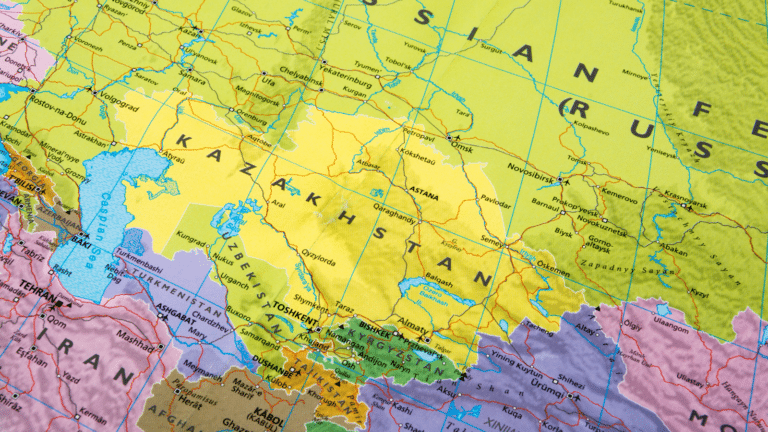Executive summary
The United States and Russia have long been the world’s largest natural gas producers, but they traditionally have not faced off in direct competition in that market. The United States was expected to become a net importer of natural gas, while Russia’s state-owned Gazprom took a prominent position in the European market. The boom in US shale-gas production changed that. While the United States had been trading gas regionally by pipeline for decades, the shale boom allowed for the export of US liquefied natural gas, putting the two gas giants in competition. Even before the first molecule of US LNG shipped, rising US production had diverted LNG destined for the United States into the European Union. Facing increased competition pushed Russia toward a more market-oriented strategy, with Gazprom adjusting its long-term oil-linked contracts that had previously been the backbone of Russian sales to European customers to use more hybrid formulae.
This was just the beginning. After a slow start, the competition brought on by US gas is to a large extent shaping the Russian natural gas strategy in Europe and beyond. For Europe, rising gas competition from new suppliers has both economic and energy security implications. Globally, it is also raising questions about how Gazprom will compete in Asia, where demand is growing and gas suppliers are looking to place future production, as well as in other markets. Understanding how Gazprom will react to US gas is thus a critical economic and geopolitical question for LNG importers and exporters worldwide.
In this paper the authors examine how Gazprom will maneuver in global markets under specific circumstances. It opens with a discussion of how the US and Russian gas sectors developed and interacted in the period before shale gas. The paper then examines how Gazprom’s gas trade has been impacted by new US production and what changes may be coming as US exports continue to increase. It finds that the advent of US LNG has already reduced Russian gas revenue, undermined its oil-linked pricing model, forced contract renegotiations and accelerated domestic gas market liberalization and LNG development.
The authors argue that Russia is in a good position to defend its market share in Europe and looks at some of the strategies that could be pursued under various market scenarios, including the following:
- High Asian demand and low oil prices: If oil-linked gas prices were pushed below spot prices, Gazprom would not need to further adjust its pricing policy (as was the case in 2015–2017). In certain situations Gazprom might even limit supplies to drive prices up and increase its rent, becoming the price maker. Such a strategy would be utilized cautiously to avoid demand destruction and prompting new FIDs for new (US) liquefaction capacity.
- High Asian demand and high oil prices: In this scenario Gazprom’s position would be well served in the short to medium term by strong revenues. In the longer term, however, high prices will attract more competitors to the markets (and prompt new FIDs), so it is important for Gazprom to keep its own prices competitive and to keep the margin of the aggregators, which are supplying the European market, below their margin in Asia. There are already almost no “pure” oil-linked contracts left, and Gazprom in Europe mainly has hybrid pricing, but this scenario will require a more fundamental shift in the pricing, with the share of spot-indexed prices becoming dominant.
- Low Asian demand and low oil prices: Gazprom may be forced to keep prices for its long-term contracts below short-run marginal costs of US LNG. Gazprom might voluntarily move to completely spot-indexed prices, simultaneously trying not only to find new markets for its gas (both in Asia and in Europe) but also to stimulate new demand. The company would need more flexible and creative marketing, and it would seek to improve the efficiency of its operations, both internationally and domestically. Should Gazprom start to see its market share decline, Moscow could decide to liberalize the pipeline export monopoly, a decision that would make Novatek and Rosneft more powerful players.
- Low Asian demand and high oil prices: Russia would feel competitive pressure not only from the United States but also from all existing low-cost LNG suppliers like Qatar, which may have to switch to Europe and keep gas prices at a low level. Gazprom would have to engage in this price competition as well, flooding the market using spare capacities and driving the prices down to the level of its short-run marginal costs, which will disincentive US LNG aggregators to offtake their LNG. Gazprom has considerable underutilized upstream capacities and huge spare transportation capacities, allowing it to drive down European prices below the level acceptable for US LNG suppliers. This scenario hurts everyone on the supply side, and it is warranted to ask how long it could be upheld.
The study finds that even in scenarios where Gazprom sees gas revenues driven down to 2009 or 2016 levels, this should not prove catastrophic for Russia. For Moscow, facing more competition in Europe is a new situation that Gazprom and decisions makers in the Kremlin will have to deal with. Under normal circumstances, competition between various sources of supply can result in net benefits for the end consumer. In addition, this paper demonstrates that the changes in the global gas market have forced Gazprom to adjust its business practices. However, the increased politization of natural gas in the United States carries a risk of inflamed tensions between Moscow and Washington.





